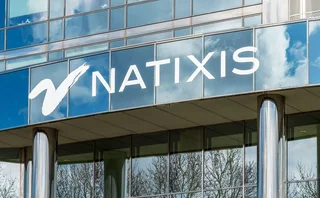
The race to replicate
Hedge fund replication indexes were hailed as an effective means of obtaining exposure to hedge fund beta at a fraction of the cost. But how did the unproven indexes perform in the turmoil of August? By Peter Madigan

Hedge fund replication indexes have experienced a baptism of fire over the past few months. The relatively new products, most of which only began trading in the first half of last year, found themselves thrust into the worst period of market volatility since the near-collapse of Long-Term Capital Management in 1998.
Replication products are designed to match the beta returns of actively managed hedge funds through rules-based algorithms, but using only liquid cash and futures markets. Since these passive strategies are, for the most part, mechanical, they can offer significant cost savings over traditional hedge funds and funds of funds, which typically charge 2% management and 20% performance fees. Additionally, the use of liquid assets means investors can avoid the lock-ups required by hedge funds, while achieving greater transparency.
The concept is based on various academic studies conducted over the past decade, which claim the vast majority of industry-wide hedge fund returns can be attributed to general market moves, rather than any outperformance achieved by managers. By studying the performance of the hedge fund industry over time and employing regression analysis, certain factors can be identified that can be replicated by investing in liquid markets, academics claim. The indexes launched to date, which include the Merrill Lynch Factor Index (MLFI), the Goldman Sachs Absolute Return Tracker (GS-ART) and the Deutsche Bank Absolute Return Beta Index (dbARss), all boast healthy back-tested returns that show a strong correlation to the hedge fund indexes they are meant to track.
However, hedge fund managers point out that these back-tested results have been achieved in a period of benign market conditions. The real test, they argue, will come in volatile markets when hedge fund managers are able to prove their mettle by reacting quickly to market conditions and dynamically managing their portfolios. For replication indexes, there is always an unavoidable lag as the returns on hedge fund indexes are analysed and portfolio allocations are readjusted - meaning the replication indexes will, in theory, not be able to react quickly to a market sell-off.
So how have the replication strategies performed? In the more clement market environment of the second quarter of 2007, the replication offerings achieved a relatively good degree of correlation with the hedge fund indexes they track (see figure 1). In April, the MLFI posted a 1.39% increase in returns. Over the same month, it was outperformed by three of its four investable hedge fund index benchmarks: the Credit Suisse/Tremont index increased by 2.02%; the Hedge Fund Research (HFR) Asset Weighted index posted a return of 2.21%; the HFR Equal Weighted index rose by 1.75%; and the MSCI Investable index increased by 1.27%.
However, there are instances where the replication strategies outperformed the indexes they are meant to track. The dbARss, for instance, increased by 2.89% in April, significantly higher than its benchmark, the HFR Fund of Funds index (HFRFOF), which saw a 1.67% increase. This was reversed the following month, when the HFRFOF increased by 2.1% and the dbARss rose by 1.35%.
The GS-ART does not use public hedge fund indexes as its benchmark, but rather a subscriber-only third-party database. Nonetheless, it outperformed most of the major hedge fund indexes, rising by 2.6% in April.
Despite instances of outperformance, most replication strategies did correlate reasonably closely to the performance of the hedge fund industry in the first half of last year. As market volatility picked up in the third quarter, however, this began to change.
August was a difficult month for the hedge fund sector, particularly those involved in statistical arbitrage strategies as the liquidation of one large quant portfolio caused equity markets to behave erratically (Risk October 2007, pages 22-25).1 Funds active in the structured credit market also suffered after rising defaults in the US subprime mortgage market, combined with uncertainty over collateralised debt obligation tranches, mass downgrades and a drying up of liquidity, caused prices in the secondary market to plunge. At the same time, global macro-strategies were punished by an unwinding of the US dollar/yen carry trade.
The simultaneous backfiring of several strategies markedly affected the performance of the hedge fund indexes in August. The Credit Suisse/Tremont index dropped by 1.53%, while the HFR Asset Weighted and HFRFOF indexes dropped by 2.55% and 2.18%, respectively. However, most of the indexes rebounded in September, with the MSCI Asset-Weighted index increasing by 2.32% and the HFRFOF index climbing 2.12%.
"The impact in August was obviously pretty bad for hedge funds, but September saw a big recovery. Returns were up 2.71% on the Credit Suisse/Tremont index, more than making up for the losses of July and August combined. I was surprised by how fast the funds bounced back," says Philippe Schenk, director at Credit Suisse Index in New York.
By comparison, the GS-ART was flat in August and up 3.9% in September, again markedly outperforming the best-performing index, the Credit Suisse/Tremont. It is important to note, however, that the GS-ART uses a proprietary selection of hedge funds to replicate, and does not directly track any index. The MLFI also outperformed the market in August, increasing by 0.01%, before tracking its benchmarks more closely in September (posting an increase of 2.31%).
The dbARss, meanwhile, fell by 1.68% in August versus the 2.18% drop in the HFRFOF index. It maintained this close correlation in September, increasing by 2.76% compared with 2.12% on the benchmark index.
"We're very pleased with the performance of our index over the last quarter, as it operated as it was meant to," says David Mann, vice-president in the fund derivatives group at Deutsche Bank in New York. "We truly replicated the beta, even if that meant the fund universe was going down and the dbARss index was going down too. Failure is an index that does not replicate the beta it tracks."
So, what accounted for the outperformance of some replication strategies in August when compared with their benchmarks? In a research paper entitled What Happened to the Quants in August 2007?, Andrew Lo, a professor of finance at Massachusetts Institute of Technology, identifies a crisis of confidence in the long/short equity market-neutral space as the key driver of the losses many hedge funds recorded.
"We hypothesise that the losses were initiated by the rapid unwinding of one or more sizeable quantitative equity market-neutral portfolios. These initial losses then put pressure on a broader set of long/short and long-only equity portfolios, causing further losses. This hypothesis suggests that the quantitative nature of the losing strategies was incidental, and the main driver of the losses in August 2007 was the resale liquidation of similar portfolios that happened to be quantitatively constructed," Lo writes.
A survey conducted in September by Mercer Consulting sheds further light on matters, concluding that "during July, passive hedge funds underperformed their active counterparts as traditional beta markets declined. In August, the situation reversed: passive hedge funds on average outperformed their active counterparts as many active managers were hit by the events unfolding in global macro- and market-neutral strategies."
Those hedge funds with positions in illiquid securities, and particularly those with exposures to subprime mortgages were particularly hard hit in August.
"I would speculate that the relative performance of hedge funds against replication products must largely depend on the performance difference between illiquid and liquid securities. So when the illiquid securities suffer greater decline, the hedge funds would perform worse than well-designed replication products," says David Hsieh, Bank of America professor of finance at Duke University in North Carolina.
As well as diverging from their benchmarks, the replication products also began to behave differently from each other. A week-by-week analysis of returns recorded by the MLFI, GS-ART, dbARss and two additional replication products, the Blue White Alternative Beta Fund (BWAB), operated by Helsinki-based investment management firm Blue White Alternative Investments, and the Partners Group Alternative Beta Strategies, an offering from Baar, Switzerland-based asset management firm Partners Group, offers some interesting insights.
Between May and early July 2007, all five of the replication strategies track each other quite closely (see figure 2). As volatility began to increase in August, however, the returns of the various replication products began to disperse dramatically. Between July 19 and August 16, all replication products fell as hedge funds indexes rapidly trended downward. There was, however, significant difference in the magnitude of the fall. According to figures from Bloomberg, the MLFI dropped by 4.5%, the dbARss fell by 6.4% and the GS-ART sank by 7.9%. Over the same period, however, the BWAB fell by just 1%.
The most obvious factor in the varying performance of the strategies is how the underlying portfolio was constructed - whether it replicates an index of single hedge funds or funds of funds, a proprietary pool of selected hedge funds, or a combination thereof.
The other key differential is the replication methodology utilised by each product. Some use factor-based replication, which employs extensive multi-factor historical regressions to determine the most relevant risk factor basket and then applies various constraints to tailor the basket to the needs of the replication strategy - for instance, limiting exposure to a single asset class and adding a bias for the most liquid underlyings. Others employ a rules-based methodology that seeks to mechanically match the performance of an actively managed multi-strategy hedge fund.
"At the index portfolio construction level, the variations between one product and another are quite large, but the irony is that when the market is calm all the replication products seem to perform in a very similar way," says Bill Fung, visiting research professor of finance at BNP Paribas Hedge Fund Centre at the London Business School. "When markets are volatile, replication products start to scatter all over the place and that is when it becomes clear what products have invested in risk strategies to protect themselves in periods of market stress. Those that held steady in July and August will have a higher risk management component to their construction."
A strong risk management component is what BWAB has identified as a key driver behind its stable performance through the worst of the market turbulence. "We run a number of positively convex (long volatility) straddles. When the market volatility shot up in July, our straddles supported the fund from below by strongly mitigating against the draw-downs that were to occur due to the decline in the factor drivers," explains Jaakko Karki, chief executive of Blue White Alternative Investments.
Lookback straddles are pairs of options containing both a lookback call option and a lookback put option that give the purchaser the right to buy or sell the underlying security at the highest or lowest price it achieves over the life of the option, otherwise known as the 'lookback period'.
"Trend followers are the best strategy hedge funds have to make money in miserable conditions, while not costing too much in a favourable investment climate. In replication, rather than hiring traders to conduct trend following for you, lookback straddles present the best mechanical alternative that fulfils that characteristic," says Fung. "The only problem is you cannot know how much a straddle will cost you and, as you can imagine, the option premium is not cheap. It's an insurance policy in a sense, in case the market makes a really big move."
Fung, Hsieh and other academics are insistent about the beneficial role lookback straddles can play in replicating the stabilising effect of trend-followers during market turmoil, and the message appears to be sinking in. Blue White is not the only replication provider using lookback straddles - both State Street and JP Morgan have also dedicated at least part of their capital to lookback straddles, says Fung.
Karki remains convinced that this is the reason the BWAB performed more strongly than its competitors over the last quarter. "The MLFI and GS-ART both have a similar factor-based approach to their product, like us. The main difference between us was that we had many lookback straddles and we did active risk management while the others did not," he says. "We were actively managing the fund risk under the constraint that the monthly return volatility should not exceed 6%. When the return volatilities of the securities underlying our factor positions significantly increased, we geared down the exposures correspondingly, while many of our competitors had much higher volatilities."
Adding lookback straddles ultimately means the replication strategies may not do what they are supposed to in downward markets - track their chosen hedge fund indexes. But would investors be disappointed that returns did not fall as low as those of the hedge fund indexes? Arguably not.
Ultimately, it will be the investors that decide the long-term fate of replication products. The providers of the replication indexes all report significant interest from the investor community, especially for the purposes of benchmarking the performance of actively managed hedge funds. Nonetheless, a fair degree of cynicism remains among some top-tier institutional investors.
"We are quite sceptical that a replication product can take a couple of liquid futures, run historical regressions on them and then claim to have captured the majority of moves in the hedge fund universe," says Gerlof de Vrij, head of global tactical asset allocation at Netherlands pension fund ABP. "A lot of these indexes do not have long data track records from live performance. Many have back-tests going back 15 years, but they've only gone live recently. We remain to be convinced."
Only users who have a paid subscription or are part of a corporate subscription are able to print or copy content.
To access these options, along with all other subscription benefits, please contact info@risk.net or view our subscription options here: http://subscriptions.risk.net/subscribe
You are currently unable to print this content. Please contact info@risk.net to find out more.
You are currently unable to copy this content. Please contact info@risk.net to find out more.
Copyright Infopro Digital Limited. All rights reserved.
As outlined in our terms and conditions, https://www.infopro-digital.com/terms-and-conditions/subscriptions/ (point 2.4), printing is limited to a single copy.
If you would like to purchase additional rights please email info@risk.net
Copyright Infopro Digital Limited. All rights reserved.
You may share this content using our article tools. As outlined in our terms and conditions, https://www.infopro-digital.com/terms-and-conditions/subscriptions/ (clause 2.4), an Authorised User may only make one copy of the materials for their own personal use. You must also comply with the restrictions in clause 2.5.
If you would like to purchase additional rights please email info@risk.net
More on Foreign exchange
Amazon, Meta and Tesla reject FX hedging
Risk.net study shows tech giants don’t hedge day-to-day exposures
Intraday FX swaps could signal new dawn for liquidity management
Seedling market could help banks pre-fund payments in near-real time and reduce HQLA requirements
Natixis turns on the taps in flow trading
French bank boosts flow business, balancing structured solutions capabilities
Stemming the tide of rising FX settlement risk
As the trading of emerging markets currencies gathers pace and broader uncertainty sweeps across financial markets, CLS is exploring alternative services designed to mitigate settlement risk for the FX market
Power-reverse to the future: falling yen revs up PRDCs again
Pressure on Japanese unit sparks revival in power-reverse dual currency notes
Credit Suisse and Commerz latest banks to ditch hold times
Mizuho also confirms zero last look add-on but MUFG’s policy unclear on the controversial FX practice
Has Covid stopped the clocks on FX timestamp efforts?
Budget reallocation may not be the only factor stalling standardisation progress, say participants
EU benchmark drama set for cliffhanger end
Access to key FX rates due to be decided six months before potential cut-off







